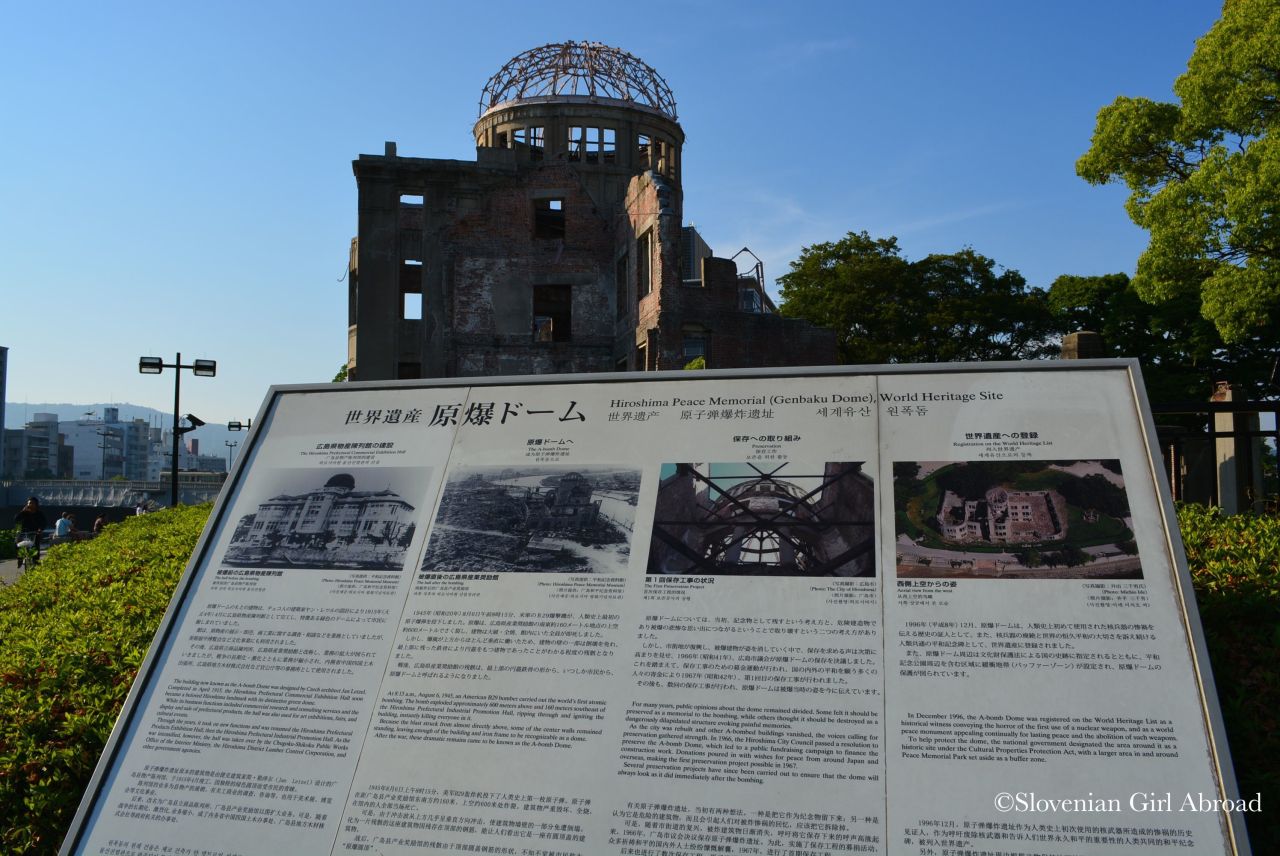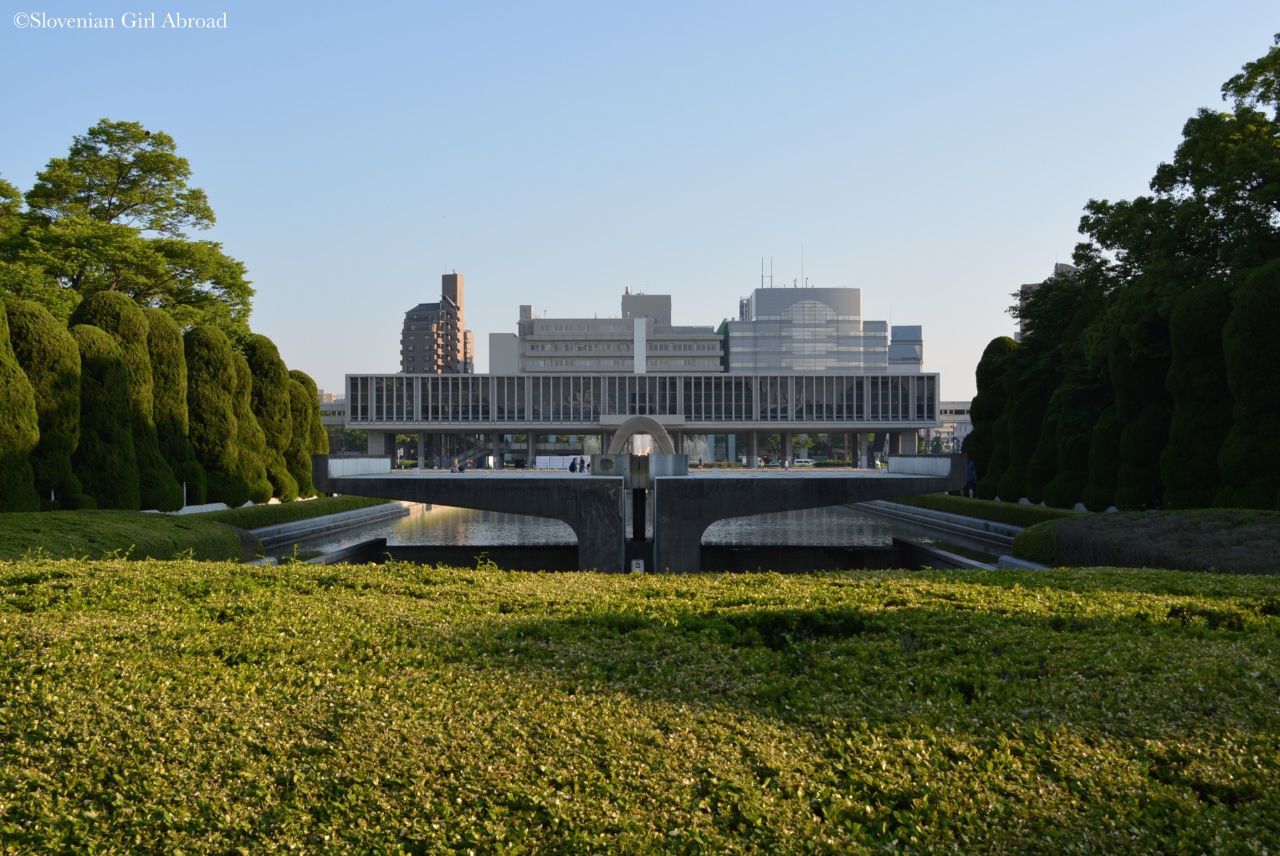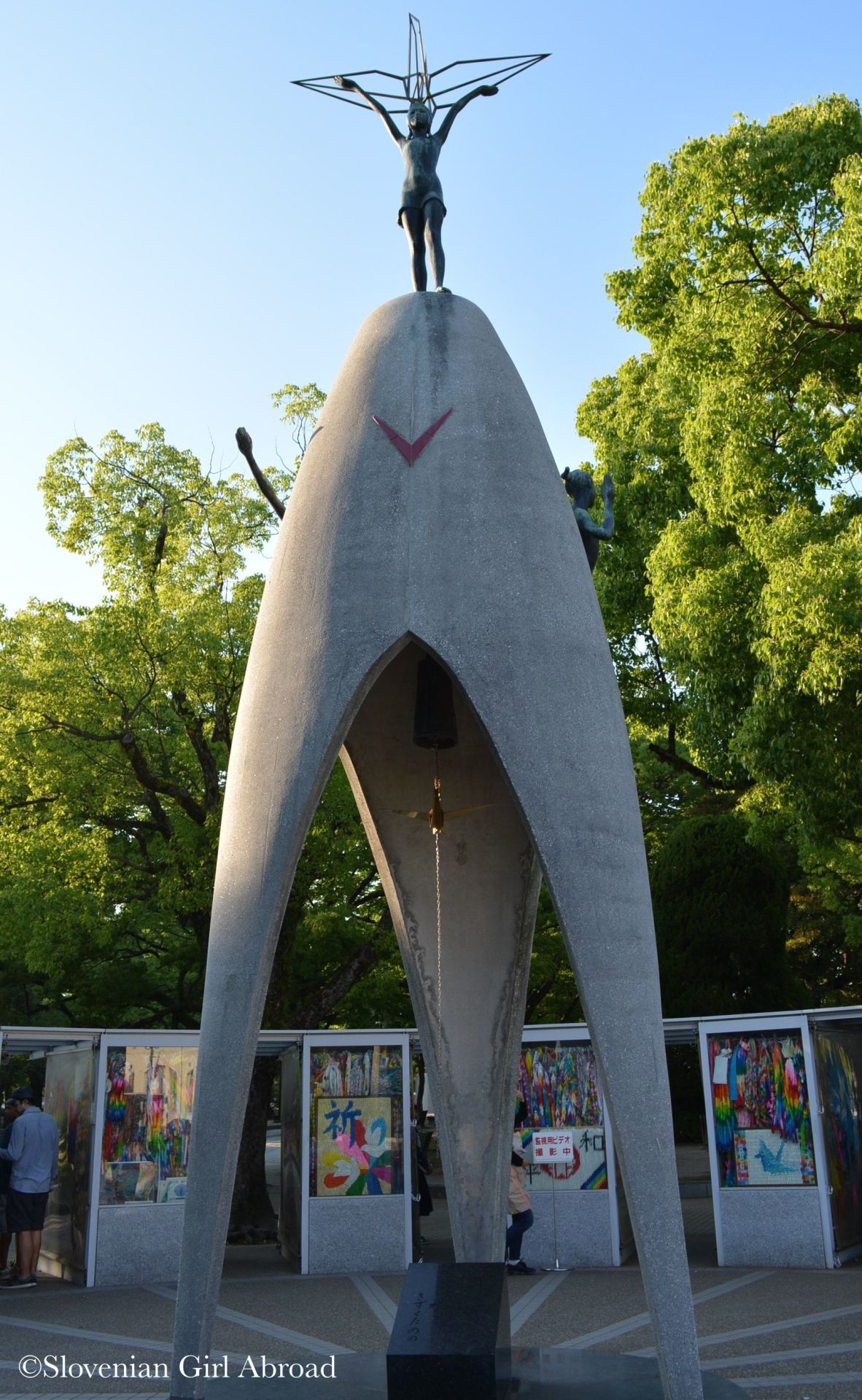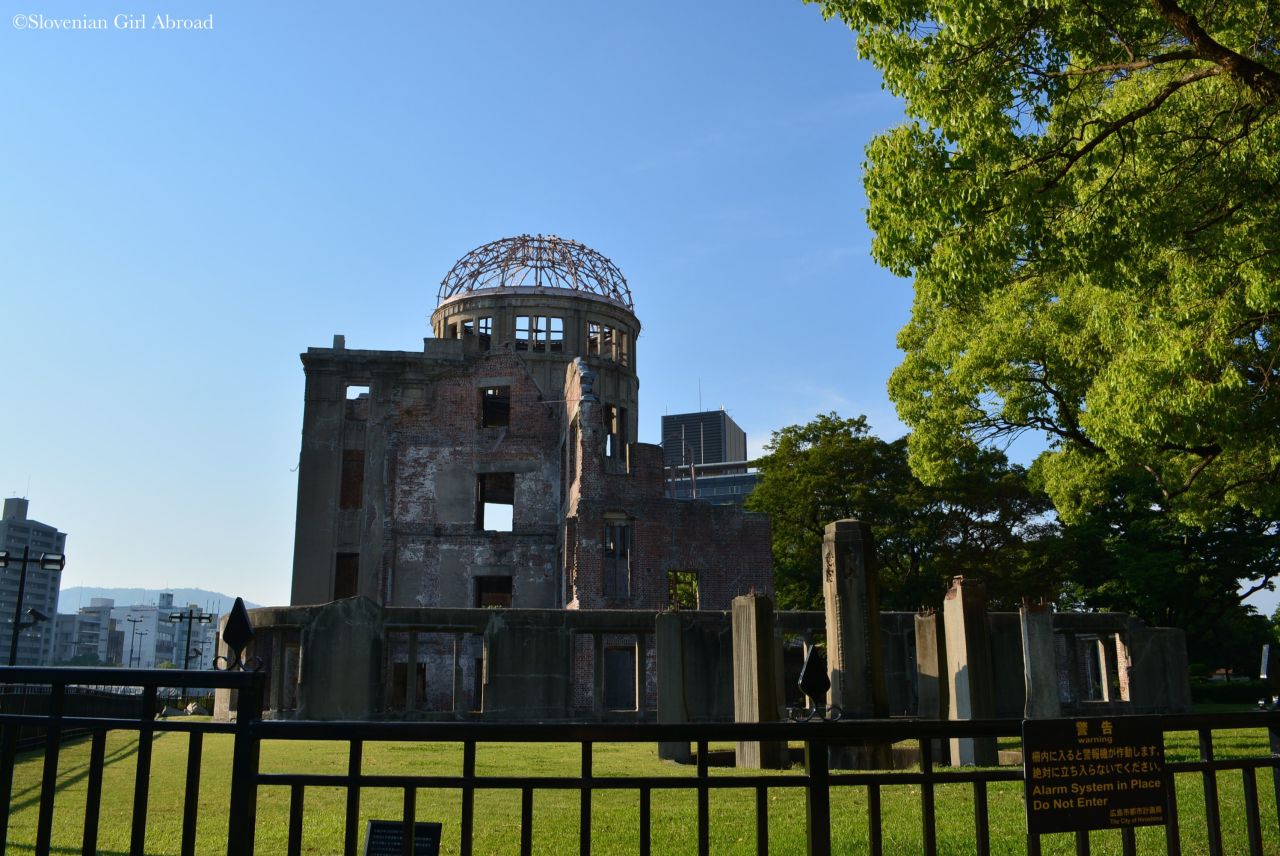As you might read one of my previous posts, my boyfriend and I spent a night at the Japanese inn in Hakone region. After the morning soak in the onsen, we’ve attended the Japanese breakfast. They served us fish, egg boiled in onsen, rice, miso soup and a bunch of different vegetable in tiny bowls. We tried the dishes, but we didn’t ate much. For our stomachs adapted to western diet was this Japanese breakfast just too heavy .

At shikansen to Hiroshima
We returned to our room, packed our things and checked out. The kind receptionist ordered us a lift to the train station and in half an hour, we were sitting on the train to Odawara. There we caught the shikansen to Hiroshima. The time at this super-fast train flew by and soon we arrived to our destination. Upon arrival, we stopped at the tourist office and grab some maps. Kind lady at the information desk who spoke perfect English also explained us hot to get to our hotel. With her instructions and a map, we found it without any problems. This time, the we didn’t have to wait for our room, it was already prepared for us. We left our luggage there and went out exploring.

A-Bomb Dome (Genbaku Dome)
Hiroshima is most famous for the darkest moment in its history: being the target of world’s first atomic-bomb attack. For me – historian/cultural heritage professional with a strong interest in the contemporary history and dark heritage, Hiroshima was therefore a must stop at our journey around Japan.

Memorial Cenotaph & A-Bomb Dome
Our hotel was conveniently located nearby the Peace Memorial Park, a large green space lifted up at the place of the hypocenter of the atomic bomb which exploded seventy years ago, on 6th August 1945. The park is dotted with memorials commemorating the victims and expressing the hope for the world peace. There is a cenotaph containing the names of all the known victims of the bomb and flame of peace that would be only extinguished once the last nuclear weapon on earth has be destroyed.

The flame of peace, cenotaph and Peace Memorial Museum
There is a Atomic Bomb Memorial Mound containing the ashes of the unidentified bomb victims.

Atomic Bomb Memorial Mound
There is a monument dedicated to the the Koreans who were shipped over to Japan to work as a slave labourers during WW2 and were killed by the atomic bomb.

Cenotaph for Korean victims
There is Children’s Peace monument that was inspired by the story of Sadako Sasaki, a young girl who survived the atomic bomb explosion and later died for the leukaemia caused by the radiation she was exposed to during the explosion. I’ve read her story in my teens, when I was about the same age as her when she died. A young dying girl who didn’t want to die so she started folding the paper cranes, a symbol of longevity and happiness. She died before reaching her goal: to fold 1000 cranes. I remember the book made quite an impact on me. Standing next to the monument dedicated to her and numerous nameless children like her, took me back in time. I felt as emotional as I did after I read Sadako’s story.

The Children’s Peace Memorial
The most striking part of the Memorial Park is Atomic Bomb Dome (Genbaku Dome), the only structure left standing in the explosion. Constructed in 1914 the building served as the Industrial Promotion Hall (Hiroshima-ken Sangyo Shoreikan), all until the bomb exploded almost directly above it and left it hardly damaged. After the end of the war, there were discussions what to do with the building. They decided to preserve in the exact same state as it was immediately after the explosion as a reminder of the destruction force of Atomic Bomb, the most destructive force ever created by the humankind. It is also a symbol of hope for the world peace . As such is one of two inscriptions at UNESCO World Heritage list that commemorates the darkest moments of human history. The other inscription is Auschwitz Concentration Camp.

A-bomb Dome
We strolled around the lovely park. We felt it such a peaceful green space is an appropriate way to honour and remember the victims of devastating events of 4th of August 1945.

Peace Bell
After we walked the park, we returned back to the vivid streets of modern-day Hiroshima. It was such a contrast to the peacefulness of the park. Craving for some western food, we went to the Italian restaurant where we ate probably the smallest pizza I’ve ever ate. Still a bit hungry we’ve grabbed some snacks and drinks at the convenience store and returned back to our hotel to refill our batteries for the next day.

I have never seen photos from there. Thank you for sharing. It looks like a peaceful and lovely place.
LikeLiked by 1 person
Yes, Peace Memorial Park is indeed peaceful and lovely place. I think is appropriate memorial for this painful event of human history.
Thanks for reading! 🙂
LikeLiked by 1 person
Nice recount of Hiroshima. The A-Bomb Dome and memorials are really touching. A true historic city if there ever was one. I hope you visited Miyajima also.
LikeLike
Thanks! 🙂 Yes, I’ve been to Miyajima too. Will write about it in my next post. 😉
LikeLiked by 2 people
Lovely peace memorial and story. Thanks for sharing.
LikeLiked by 1 person
Thanks for this moving post Urska – so important to remember the past in this way and also it inspires some hope for the future with the peace memorial and the dome building that withstood the catastrophic event. I have visited Sachsenhausen near Berlin and what happened there was unspeakable – my daughter has been to Auschwitz and there are simply no words. You have written a difficult subject in a heartfelt way – thanks for sharing.
LikeLiked by 1 person
Hiroshima is such a surprisingly brilliant place to visit isnt it. Very moving. Thanks for sharing!
LikeLiked by 1 person
I also remember reading Sadako’s story when I was a kid. It was so sad and so touching. Thanks for the post!
LikeLiked by 1 person